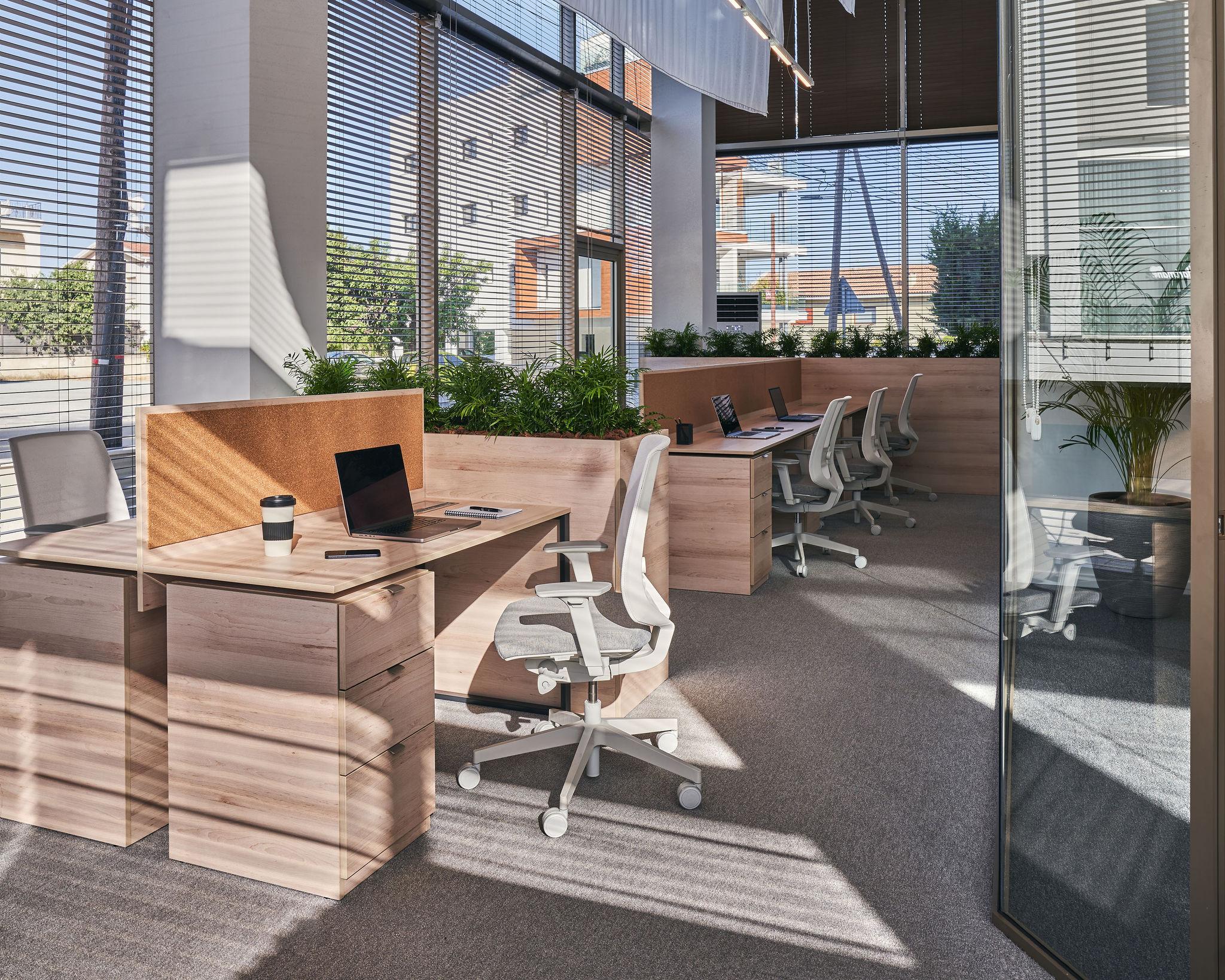The role of the design team is not limited to creating aesthetically pleasing and functional spaces. Using innovative solutions in architecture and interior design, it is possible to significantly reduce energy consumption in the office.
To make the use of electricity in the office as optimized as possible, experienced designers and architects adhere to the following rules:
Maximize the use of natural light in the room
Architects use windows and stained glass systems to regulate the amount of natural light at every point in the room. Natural light is one of the most powerful tools in an interior designer's arsenal. When its quantity is optimal, the need for artificial light during daylight hours is maximized. To improve the distribution of natural light, designers select light-diffusing surfaces and materials.

An office with large panoramic stained glass windows. Design by ZIKZAK Architects
Choosing energy-efficient lighting systems
Designers choose energy-efficient lighting systems with occupancy sensors to ensure that light is emitted only when it is needed. Lights are turned on where people are, minimizing unnecessary energy use. Introduce an automatic system to regulate the brightness of the light, depending on the level of natural light. The choice of such systems not only reduces energy consumption but also extends the life of lighting fixtures.

An office with an energy-efficient lighting system. Design by ZIKZAK Architects
Zoning the rooms
And so that autonomous control of lighting, heating and cooling in certain areas, depending on their occupancy at a particular time. For example, when zoning according to the placement of teams, all parameters are controlled separately by each team. With individual lighting control for each workplace, no electricity is wasted to illuminate the desk of an employee who is absent from the office.

Open space in the office. Design by ZIKZAK Architects
Provide the necessary thermal insulation
Architects provide adequate insulation to minimize heat loss in the winter and heat gain in the summer, reducing the need for space heating and cooling.
Select energy-efficient appliances
This reduces energy consumption. Energy Star labeled office equipment and appliances indicate that the appliances are highly energy efficient. Designers are meticulous in applying just such solutions to maximize energy savings.
In addition, projects are certified and rated according to one of the international systems LEED, BREEAM, and DGNB. These are the current certification rating systems for so-called "green" buildings.
The project team takes a comprehensive approach to the future of the workspace. Solutions for energy efficiency of the office and optimization of electricity use in it save the business significant funds for the maintenance of the premises and ensure an informed attitude of the company to the environment.
Read also:

